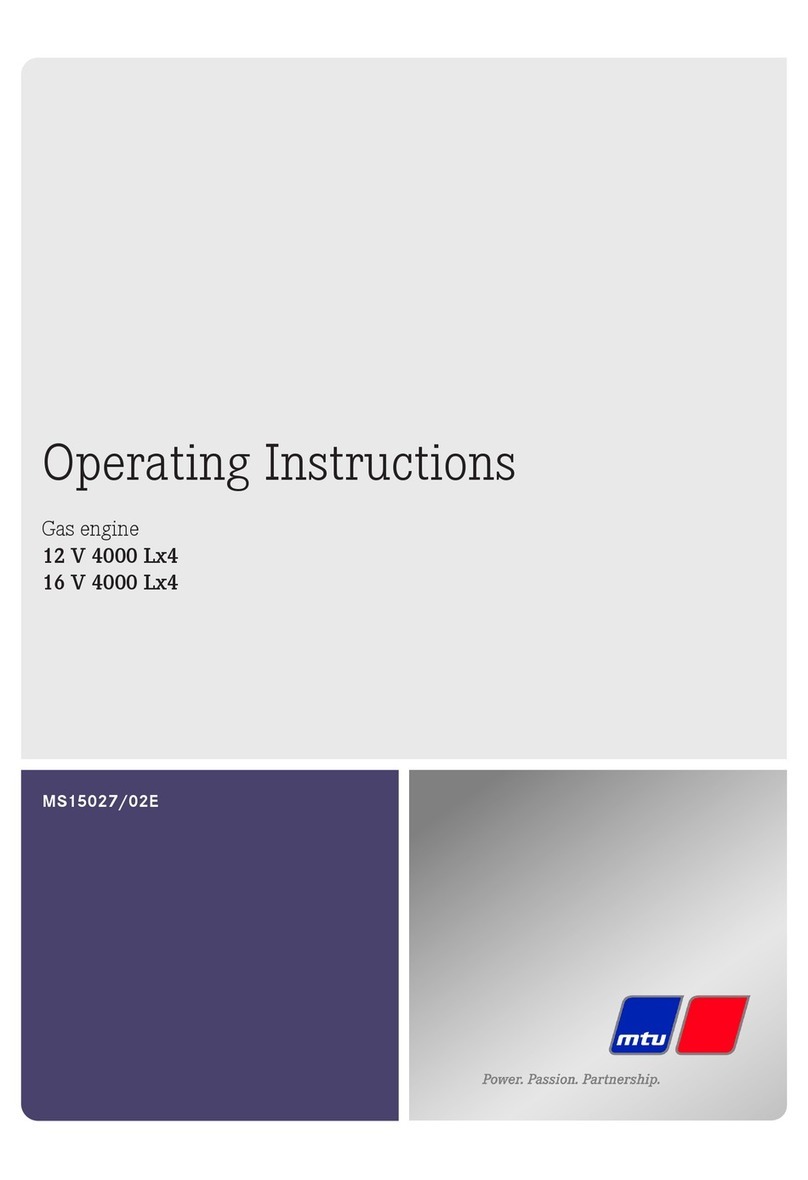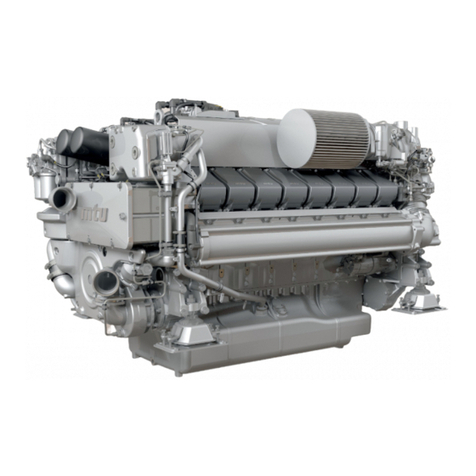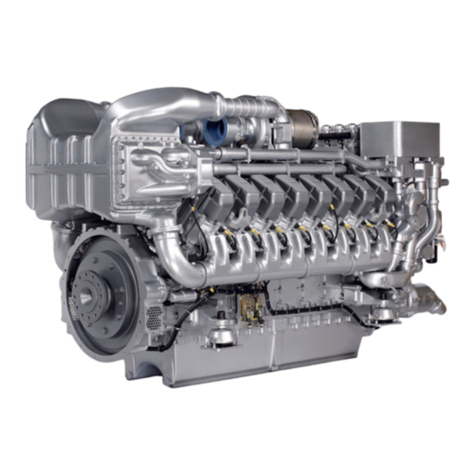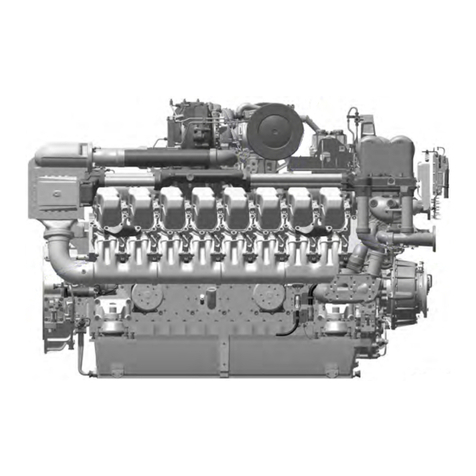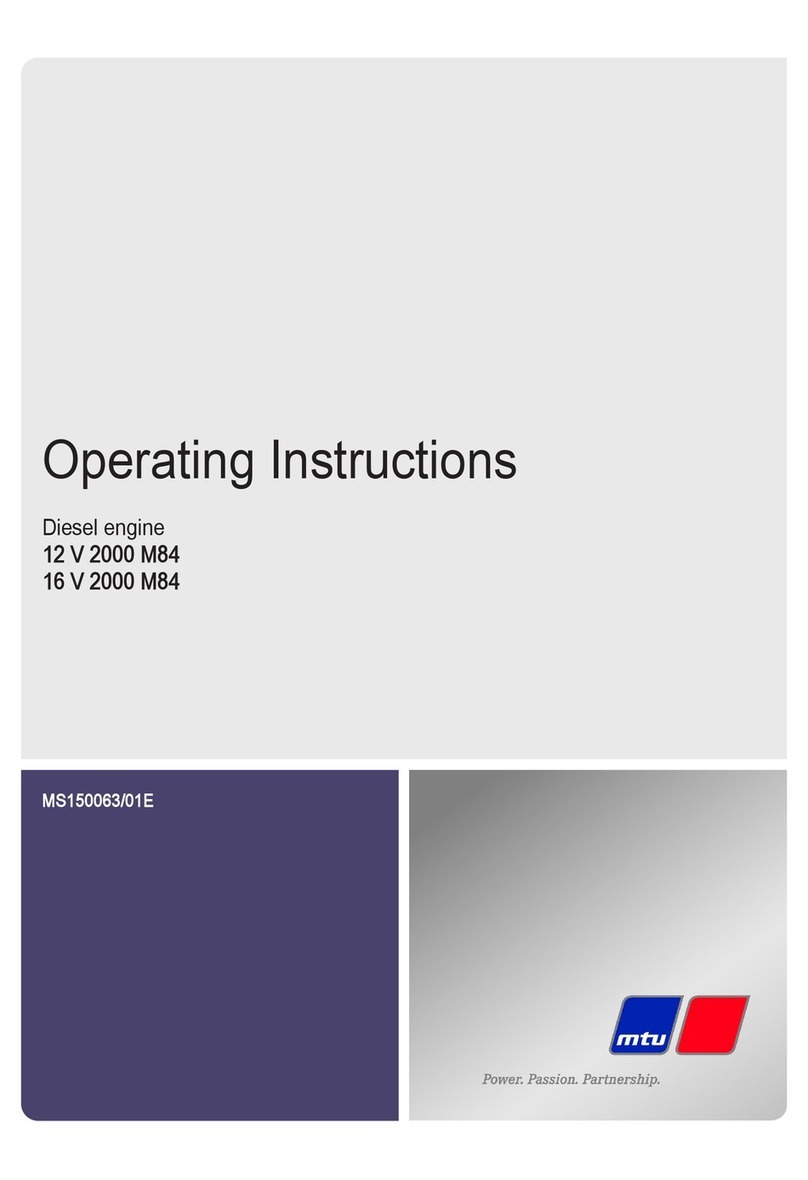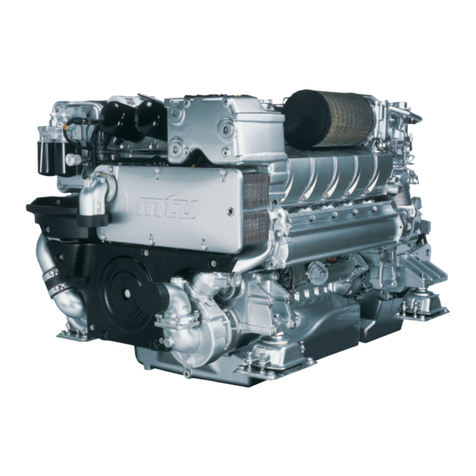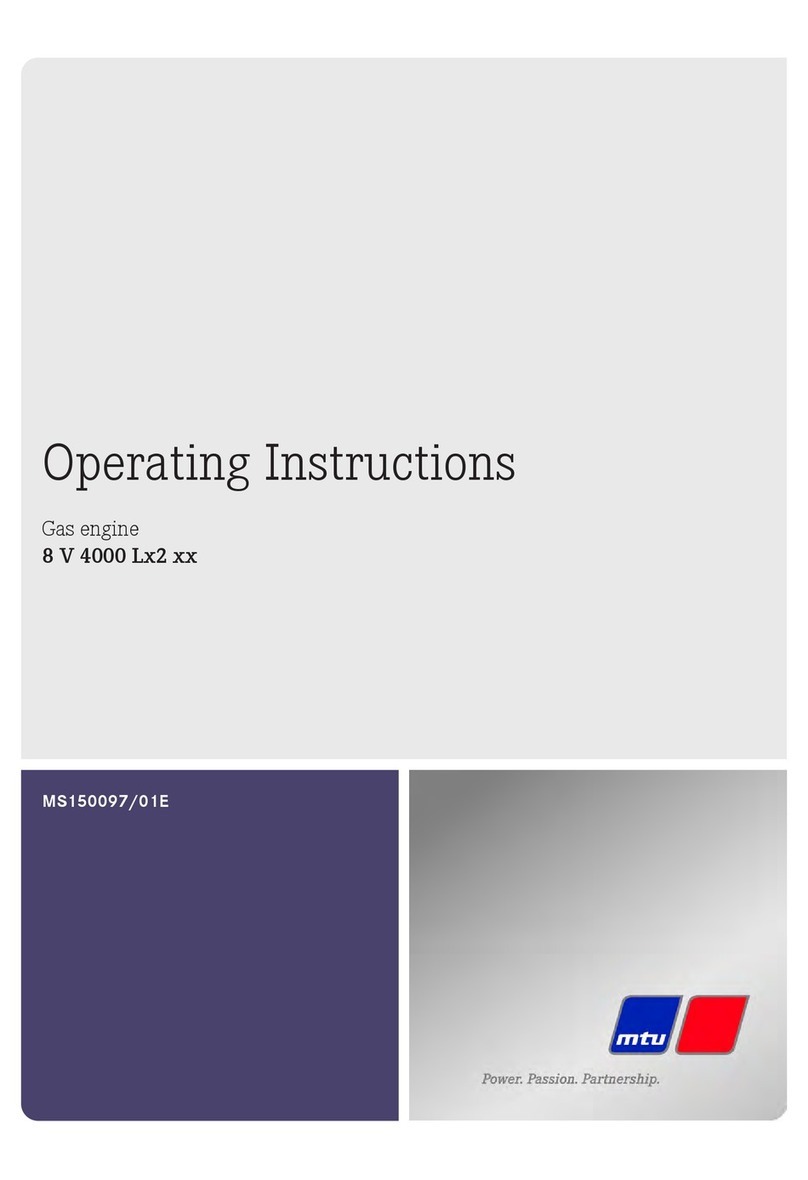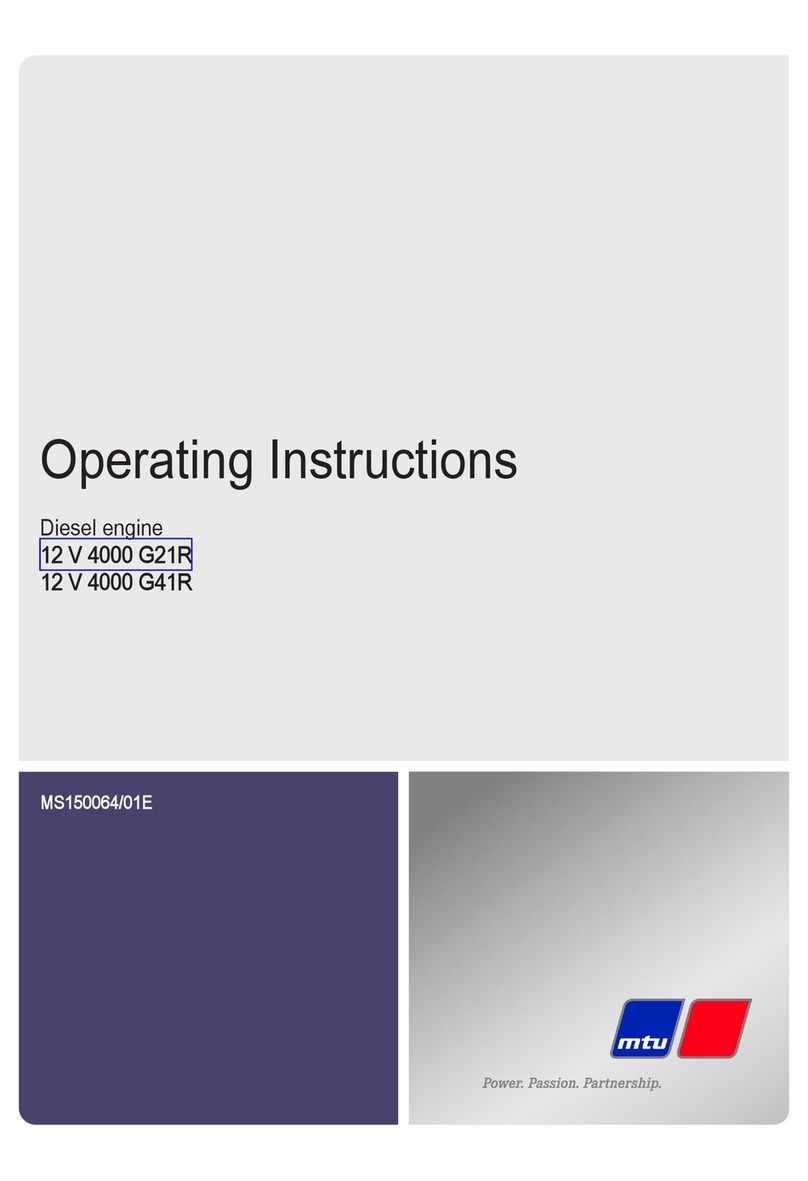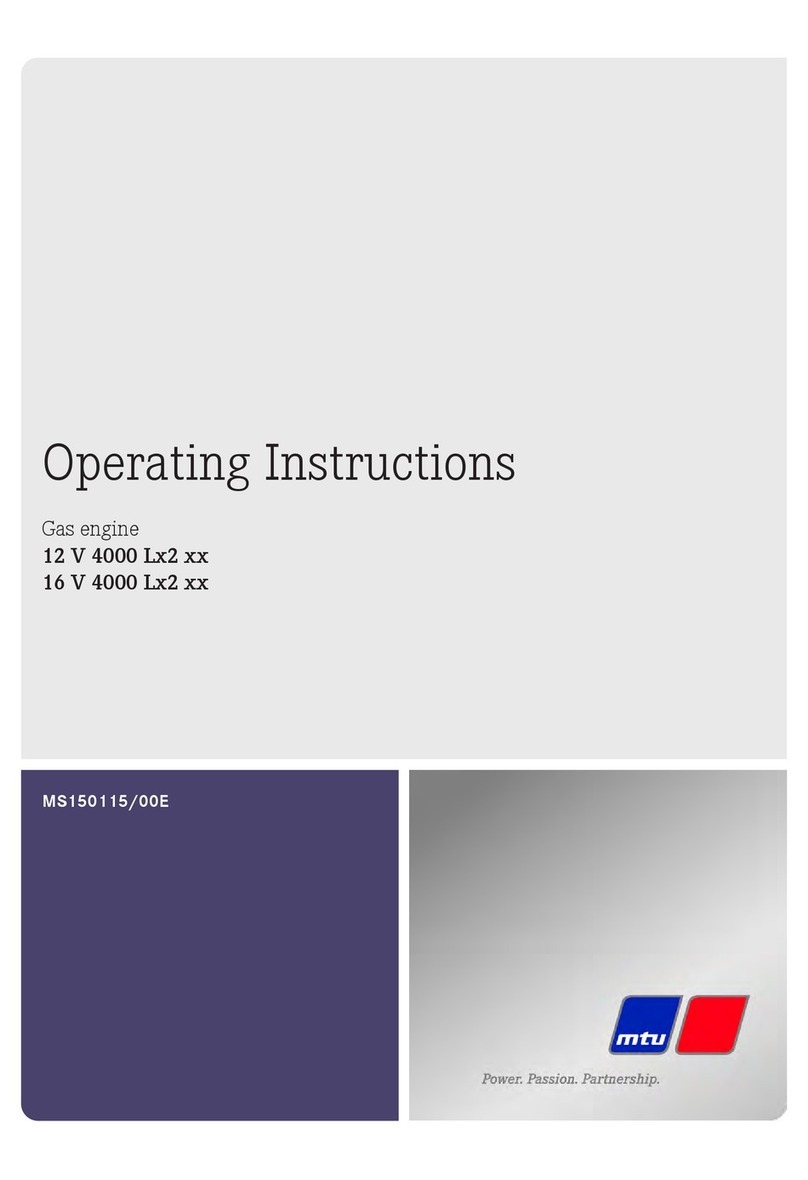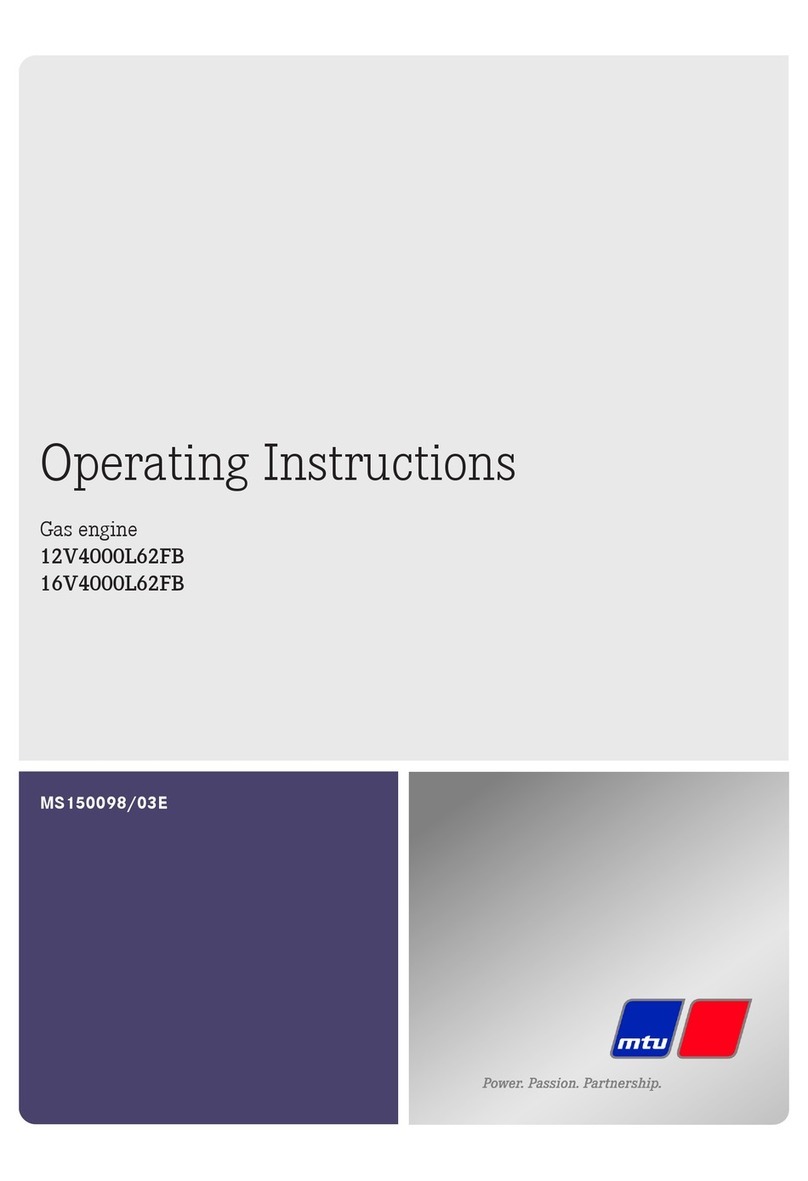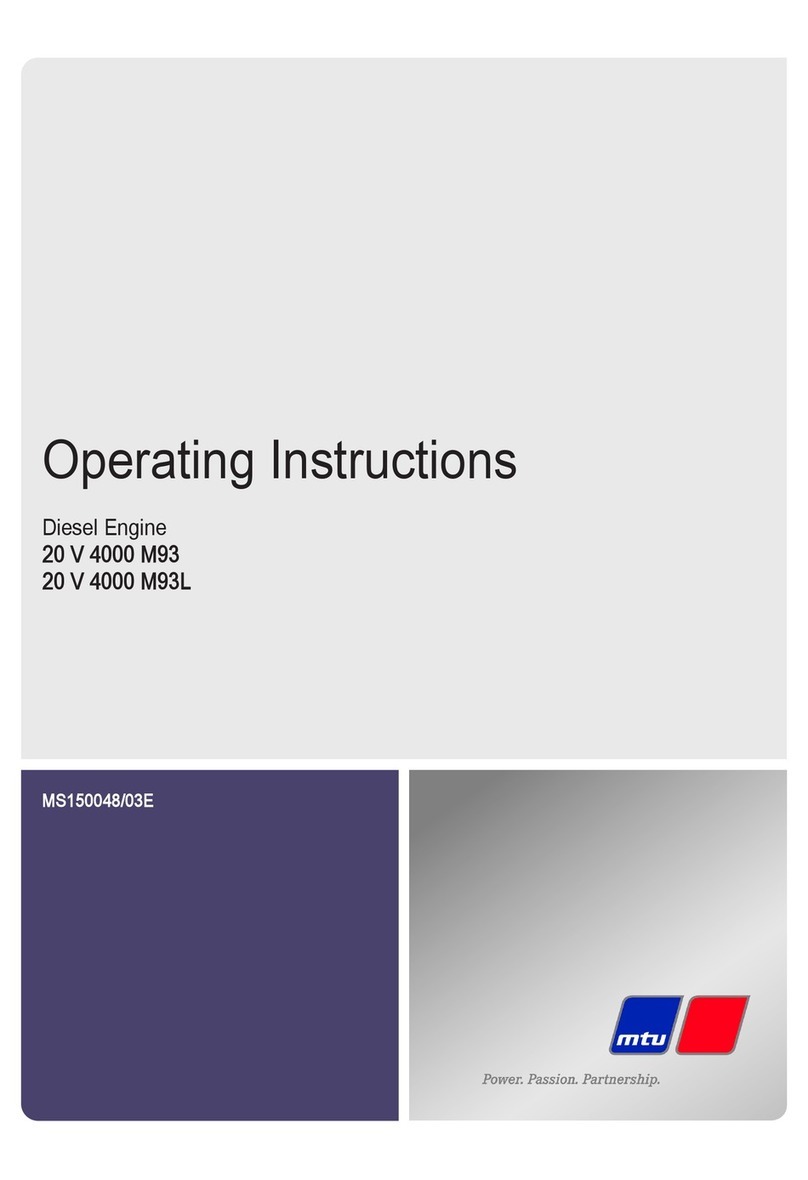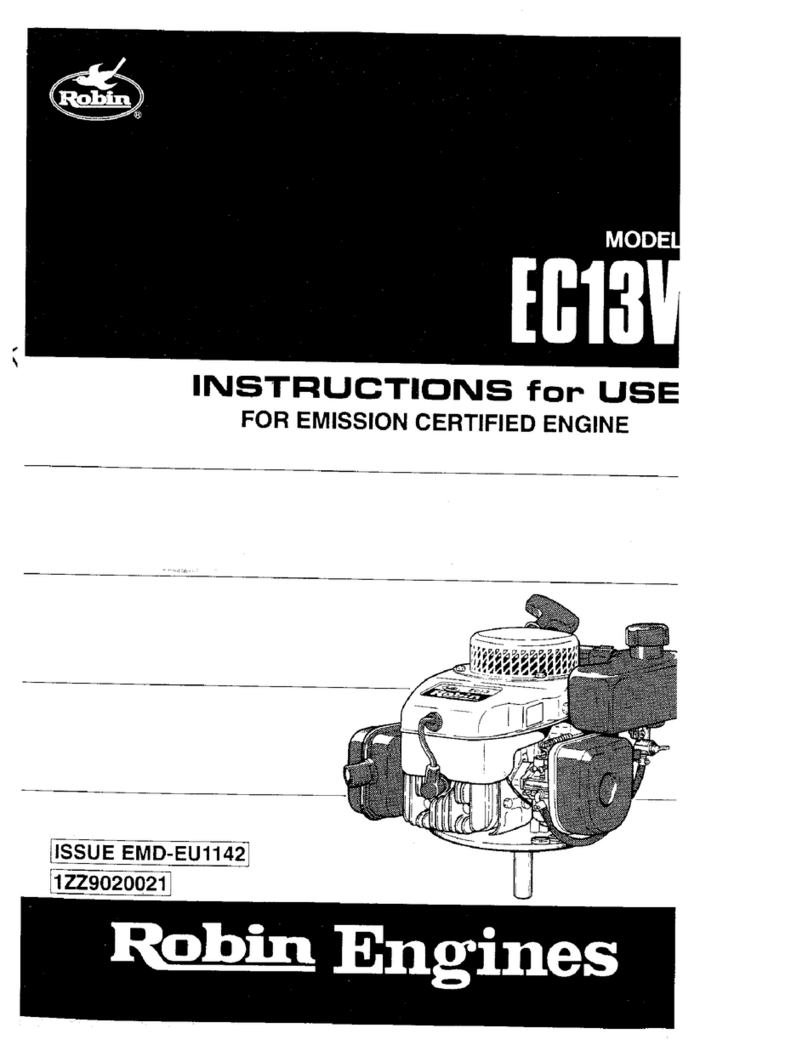
8.5.1 Valve gear – Lubrication 166
8.5.2 Valve clearance – Check and adjustment 167
8.5.3 Cylinder head cover – Removal and
installation 170
8.6 Injection Pump / HP Pump 171
8.6.1 HP fuel pump – Filling with engine oil 171
8.6.2 HP fuel pump – Relief bore check 173
8.7 Injection Valve / Injector 174
8.7.1 Injector – Replacement 174
8.7.2 Injector – Removal and installation (jacketed
fuel system) 175
8.8 Fuel System 182
8.8.1 Fuel system – Venting 182
8.9 Fuel Filter 184
8.9.1 Additional fuel filter – Overview 184
8.9.2 Supplementary fuel filter – Replacement 185
8.9.3 Fuel filter – Replacement 187
8.9.4 Fuel prefilter – Differential pressure gage
check and adjustment 189
8.9.5 Fuel prefilter – Draining 190
8.9.6 Fuel prefilter – Flushing 192
8.9.7 Fuel prefilter with water separator – Filter
element replacement 194
8.9.8 Fuel prefilter with water separator – O-ring
replacement in rotary slide valve 197
8.10 Exhaust Turbocharger 198
8.10.1 Compressor wheel – Cleaning 198
8.11 Charge-Air Cooling 206
8.11.1 Intercooler – Checking condensate drain for
water discharge and obstruction 206
8.12 Air Filter 207
8.12.1 Air filter – Replacement 207
8.12.2 Air filter – Removal and installation 208
8.13 Air Intake 209
8.13.1 Contamination indicator – Signal ring position
check 209
8.14 Starting Equipment 210
8.14.1 Starter – Condition check 210
8.15 Lube Oil System, Lube Oil Circuit 211
8.15.1 Engine oil level – Check 211
8.15.2 Engine oil – Change 212
8.15.3 Engine oil – Sample extraction and analysis 214
8.16 Oil Filtration / Cooling 216
8.16.1 Oil indicator filter – Cleaning and check 216
8.16.2 Engine oil filter – Replacement 219
8.16.3 Centrifugal oil filter – Cleaning and filter
sleeve replacement 221
8.17 Coolant Circuit, General, High-Temperature
Circuit 225
8.17.1 Engine coolant level – Check 225
8.17.2 Engine coolant – Change 226
8.17.3 Engine coolant – Draining 227
8.17.4 Engine coolant – Filling 230
8.17.5 HT coolant pump – Relief bore check 232
8.17.6 Engine coolant – Sample extraction and
analysis 233
8.17.7 Preheating unit 234
8.17.8 Preheater – Overhaul 237
8.17.9 Preheater – Function and leak-tightness check 238
8.18 Raw Water Pump with Connections 239
8.18.1 Raw water pump – Relief bore check 239
8.19 Battery-Charging Generator 240
8.19.1 Battery-charging generator drive – Coupling
condition check 240
8.20 Auxiliary PTO 241
8.20.1 Bilge pump – Relief bore check 241
8.21 Engine Mounting / Support 242
8.21.1 Engine mounting – Checking resilient element 242
8.22 Fuel Supply System 243
8.22.1 Water drain valve – Check 243
8.22.2 Differential pressure gage – Alarm function
check 244
8.22.3 Water level probe (3-in-1 rod electrode) –
Check 245
8.22.4 Pump capacity – Check 246
8.22.5 Coalescer filter element ‒ Replacement 247
8.23 Wiring (General) for Engine/Gearbox/Unit 249
8.23.1 Engine wiring harness – Overview 249
8.23.2 Engine cabling – Check 257
8.24 Accessories for (Electronic) Engine
Governor / Control System 258
8.24.1 Limit switch for start interlock – Check 258
8.24.2 Engine Control Unit ECU 7 – Checking plug
connections 259
8.24.3 Engine Monitoring Unit EMU 7 – Plug
connection check 260
8.24.4 Interface module EIM plug connections –
Check 261
8.24.5 Engine governor ECU 7 – Removal and
installation 262
8.24.6 EMU 7 – Removal and installation 263
8.24.7 Engine Interface Module EIM 2 – Diagnostic
features 264
8.24.8 Engine Interface Module EIM 2 – Removal and
installation 267
8.24.9 CDC parameters – Reset 268
9 Appendix A
9.1 List of abbreviations 269
9.2 MTU Contact/Service Partners 271
4 | Table of Contents | MS15035/00E 2018-08
DCL-ID: 0000051760 - 001
